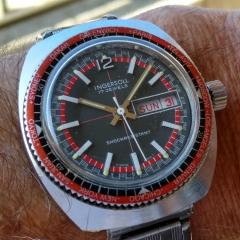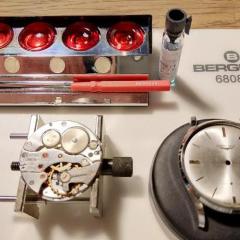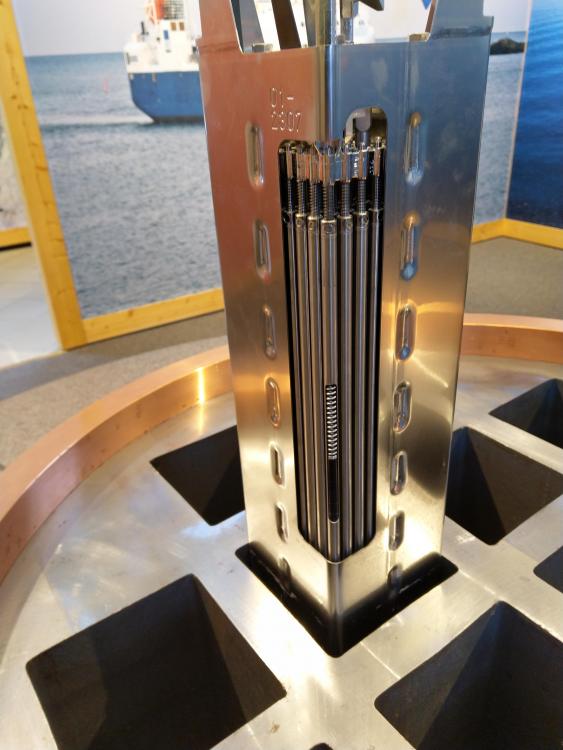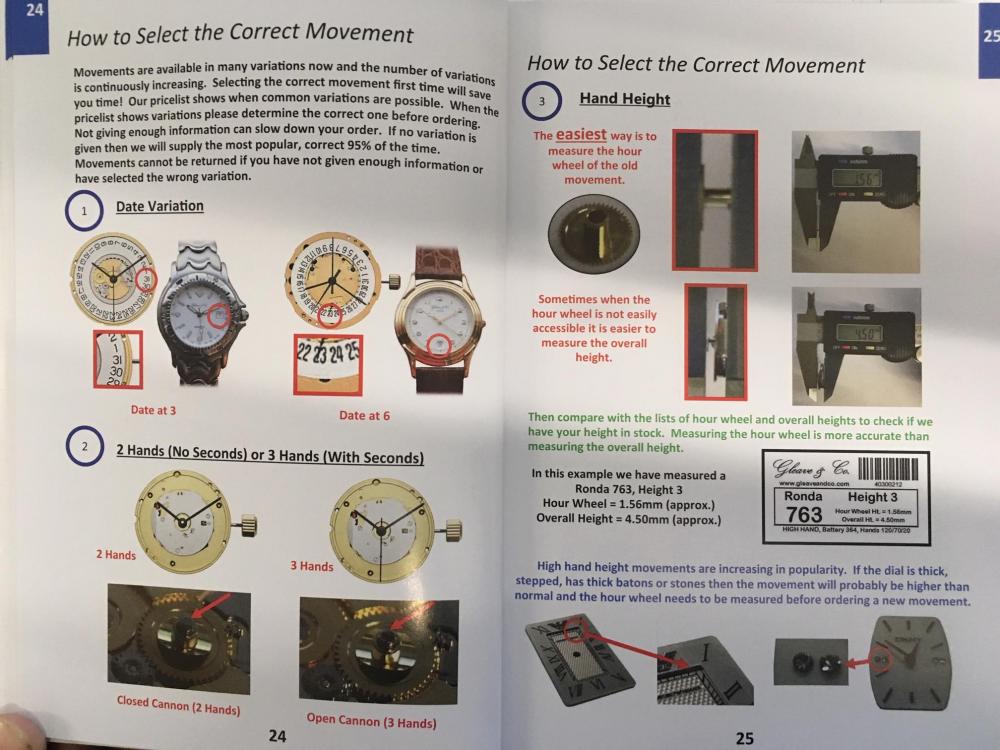Leaderboard
Popular Content
Showing content with the highest reputation on 01/10/19 in all areas
-
While out shopping last week, I stopped in at my local Goodwill Industries store and browsed their watches. For non-US residents, Goodwill is a business that provides work training and employment for handicapped individuals. They fund a lot of their programs by accepting donations of everything from clothing to furniture to jewelry and then selling it in one of their stores. It's a great place to pick up an odd bargain plus, it helps the community. I was delighted to spot a Seiko perpetual date 8F32-0019 on display. It was offered for $21 as it wasn't working. It hasn't been two weeks since I viewed Mark's excellent YouTube video about how to change the battery in one of these watches, then reprogram it. I bought it and brought it home. To begin with, this particular example was manufactured in May, 1998 which places it near the end of the product cycle. That caliber has been discontinued for some time now. This particular watch was a game premium at the Big XII football championship which was sponsored by Dr. Pepper, a soft drink brand. They were given to each team member, coaching staff, trainers, important alumni, etc. What makes this one unique is that it was never worn. That's right! Whomever receive it placed it on a shelf in the closet where the battery (10 year battery life on this model) died and the watch lost its program. It was donated recently to Goodwill where I found it. I replaced the CR2014 coin cell battery, then reprogrammed it according to Mark's instructions. Thank you Mark. The inside of the watch was basically untouched. At some point, the company that supplied the watches to Dr. Pepper removed the original dial and replaced it with the commemorative one it now sports. The only other issue noted was the date changed at 9:30 each evening instead of midnight. I suspect that whomever replaced the dial didn't bother to properly set the hands when reinstalling them. Additionally, the sweep second hand was off by half the width of 1 second. I corrected those by removing and properly reinstalling the hands. Were it not for Mark's original video, I wouldn't have had the knowledge to buy this watch, replace the battery, reprogram it and reset the hands. This is an absolute little jewel of a watch. Additionally, since it operates at 196 Khz instead of the more usual 32768 Hz, these models are incredibly accurate. The factory spec for a model of this type that is worn 12 hours/day is +/- 10 seconds/year. Wow!1 point
-
I had that pocket watch in my drawer for weeks but I'll have a meeting this week-end with the owner of that little piece. So I started yesterday morning (wee-wee hours) then spent some hours yesterday evening and this morning again. Tonight it's almost done ... movement works nicely, case is clean and shiny enough for an oldie and dial is clean and relumed (hands too). Tomorrow evening I'll just have to put everything back together.1 point
-
This is little more than an inexpensive copy of the Seiko S-261 and won't work any better for you. Most of the Seiko snap on water resistant models that I've owned all have the indention on the back placed between the lugs. You need a removal tool that is capable of working between the lugs and this one won't do it. At least not properly. You would have to clamp the cast too high in the tool in order to access the area between the lugs and the watch will pop out of the holder instead of giving up the case back. Even if the small removal indention is on the side, every Seiko repair manual that I've read cautions to place it between the lugs when reinstalling the back. Your watch may or may not be a JDM version. Usually, JDM versions were sold only in their Eastern markets, mostly in Japan. However, many US sailors purchased watches when on a western Pacific deployment over the years and these watches have slowly found their way into our domestic supply chain. My general rule of thumb regarding JDM models is to ascertain whether or not the model was ever sold in the US at retail. The 6119 movement was a real workhorse in movements sold to the US markets so what you may have is a Japanese version of this watch with the Kanji week wheel. The wheels aren't plentiful. Indeed, no spare parts for this caliber are in good supply but other calibers shared some parts so thankfully, restoration is mildly difficult but certainly not impossible. There is currently one Arabic week wheel for this caliber listed on our favorite auction site but it's a bit spendy. Were it me, I would leave the wheel and learn the Japanese day characters. There are only 7 of them and Sunday is a gimme since it's in Red. Vive la difference, eh?1 point
-
@oldhippy is of course completely correct and normally the keyless works are what is necessary to accurately identify a movement. In this case however enlarging the picture there's a '20' on the barrel bridge which puts it at this model: http://www.ranfft.de/cgi-bin/bidfun-db.cgi?10&ranfft&&2uswk&Girard-Perregaux_20 You might therefore also be interested in this: https://forum.tz-uk.com/showthread.php?419737-Resurrecting-a-Girard-Perregaux1 point
-
Just by a chance I happen to work at a company dedicated to handle low, medium and high level radioactive waste. I haven't really followed this discussion before about 226Ra (Radium) but can only agree in the conclusion Andy has presented here. As long you wear good protection like nitrile gloves and don't lick on the dial or at your fingers after you handled the dial or hands you shouldn´t be worried. As with any hazardous material one should use common sense when handling it. A simple respiratory mask will be enough protection if you are afraid you are in the risk zone to inhale 226Ra. Even if you have had protective gloves when handling the dial or hands always wash of your hands with soap and water. I usually leave the residues of 226Ra on the dial after a slight cleaning of the dial with Rodico. Most often it goes away from the dial hands when cleaning them and therefore gets stuck in the Rodico. If you worry about the radiation from the residues on the Rodico: then just put it in a jar with water. Water is a good protection against radiation and we also use it as protection when handling high level waste from nuclear plants. The small amount from one or two watches will not contribute as any source for radiation that significantly will affect any living been. One have to keep in mind when it comes to the thing with "The radium Girls", back in the time some people still believed radium was a miracle cure for anything and they didn't see any harm in painting not only their teeth but also use it as makeup. Radium is a poisonous chemical. 226Ra mostly contributes with alpha and beta radiation which has a short reach and limited penetration ability, the small amount of gamma radiation one get from a watch is very hard to detect since the background radiation in the most cases is probably higher. To detect alpha and beta radiation from radium you have to use specialized equipment calibrated to 226Ra. These instruments are not commonly available at Ebay. Just buying a cheap gamma detector which is not calibrated for the use to check your watches is in my mind just a waste of money since the most people haven’t got any training in how to use them or the understanding in how to interpret the results from the measurements. So just be cautious and aware when handling this kind of watches and I think the most of you can sleep without worrying about radiation hazards even if you like me are collecting watches from the time period when dials were painted with Radium. P.S If you see something like in the picture below in your watch then you should be a little more cautious.1 point
-
The tool is only worth it if you make a living fixing watches/changine batteries. I usually force a paper cutter blade as a start, this is to widen the gap so a case knife can get in. Sometime the paper-cutter blade needs to be tapped in with a small hammer. Note do not use this blade to open the caseback, just to widen the gap. Watch your fingers as the blade is sharp! Anilv1 point
-
Not all case backs that look like they should come off, actually do. Some watch cases are split in other ways, and some only allow access from the front. Show us some pictures of the watches in question and we might be able to assist.1 point
-
Assuming you don't have a geiger counter, then the next best thing is a UV torch (the sort of thing used to check bank notes). Shine it on the dial, while sitting in a darkened room, and if there is any phosphorescent material on the dial (zinc sulphide generally), then it will glow. This of course doesn't tell you exactly what the luminous paint is, but you can make an educated guess from the age of the watch, and the info here -> https://en.wikipedia.org/wiki/Luminous_paint#radioluminescent_paint The zinc sulphide degrades over time, so even if the watch doesn't appear to have active lume, this doesn't mean it isn't mildly radioactive. I don't think these things actually present a significant radiolgical hazard, so long as you treat them with the same caution you would if handling any other hazardous material. Wear nitryl gloves, avoid breathing in any dust from the watch, wash your hands afterwards and you should be fine. Once the case and crystal are back on, the amount of radiation they emit is so small as to be almost unmeasurable, since it is mainly alpha radiation, which would be stopped by a thin piece of paper. You probably encounter similar levels of radioactive material of one sort or another daily anyway, especially if you live in an area where there is granite in the rocks, or you have granite work surfaces. See here-> https://www.watchrepairtalk.com/topic/10086-radon-hazards-of-luminous-timepieces/?tab=comments#comment-91769 .. for a more in depth discussion of luminous dials.1 point
-
Here is a guide I made. Firstly it looks like your old movement is 2 Hands, secondly your date disc looks damaged so I would reuse it. Secondly I would strongly recommend replacing it with a 956.112 rather than a 956.114. 956.112 is 95% the same, completely interchangeable, it is simply the updated version and therefore a better movement. If you had a power extension lead from 1990, you wouldn't replace it with a new old stock extension lead also from 1990. The movement will be old and the oil likely to be gummed up. The new version will be fresh and manufactured within the last year or two. 956.114 will be second hand and/or have been sitting in stock for 15-25+ years. Finally your movement is likely to be standard height unless the dial looks unusually thick so not need to worry about this.1 point
-
1 point
-
It's not so. Having set a wrong lift angle does not generate false knocks. Also it has nothing to with balance poising. All it does it to allow correct calculation of amplitude. It does not intervene at all in pattern, timing, or beat error.1 point








